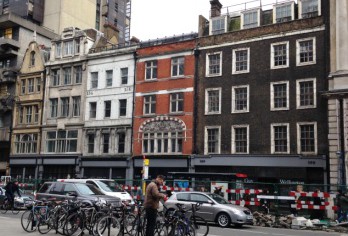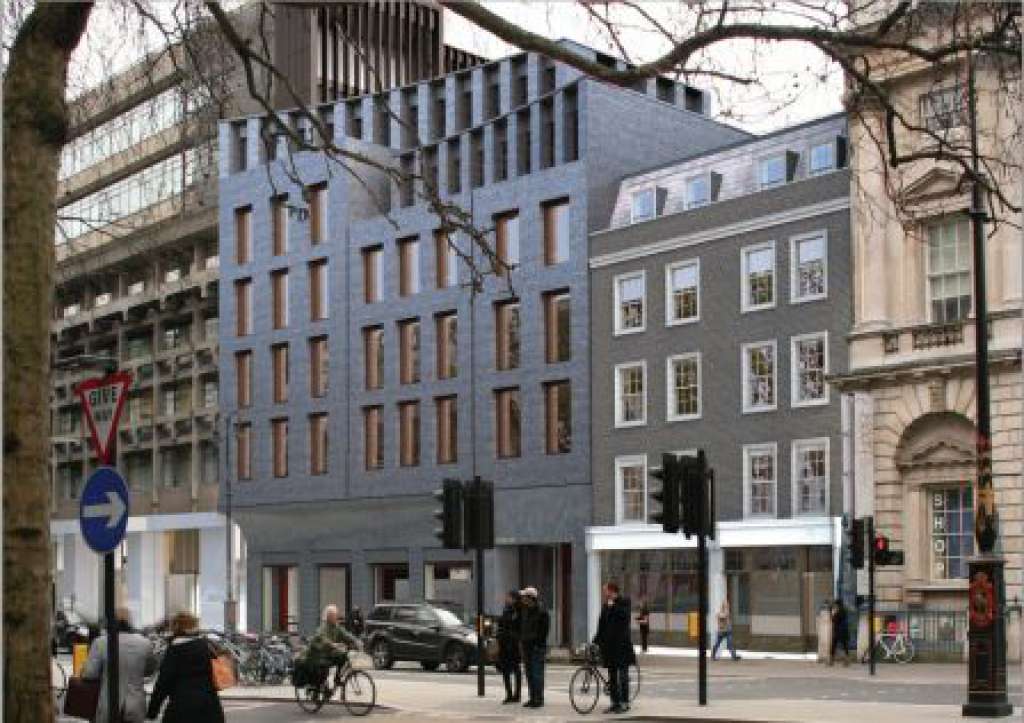Press release: SAVE salutes King's College London's decision to withdraw its planning application for the Strand
19 June 2015
Press release: SAVE salutes King's College London's decision to withdraw its planning application for the Strand
King's College London have withdrawn their plans to demolish 154-158 and façade 152-153 Strand, following overwhelming public opposition led by SAVE.
SAVE is delighted with this news and salutes King's decision. We hope this action will lead to a happy outcome for the site and all involved.
In a letter to students and staff Principal of King's Professor Edward Byrne, said:
"I would like to inform you that we have decided to withdraw our application for planning consent for our Strand Campus. Part of the proposed redevelopment, which included the Strand façades, has been the subject of controversy over recent months.
"However, we recognise the groundswell of opinion and are sensitive to the heritage values of our city. As a result we have today withdrawn our plans and will consider alternative options."
SAVE is working with architect John Burrell on alternative drawings to show ways in which 152-158 Strand can be incorporated into the campus masterplan in a sensitive and imaginative way. These alternatives would ensure that the historic buildings and environment are preserved and enhanced, whilst still providing King's with required expansion of academic space.
Today's news comes after the planning application was called in on the 9th June for a public inquiry by Secretary of State Greg Clark. A sustained campaign led by SAVE and supported by many others, including the Victorian Society, the Ancient Monument Society, and LAMAS, saw over 10,000 members of the public sign a petition calling for the buildings to be saved.
Thank you to everyone who signed the petition and who wrote letters to the Secretary of State. This campaign is a real showing of what people power can achieve.
Clem Cecil, SAVE Director said: "SAVE salutes King's decision to withdraw their application for the demolition of the Strand buildings following a strong public campaign led by SAVE. This is fantastic news for all those who love London. SAVE is working on a scheme for the site with an architect to show how with an imaginative and sensitive design approach these buildings can be be brought back into use and the concerns raised by King's about any challenges these buildings may present, can be resolved.
"The overwhelming support for our campaign by the general public indicated the strength of feeling people have for London's historic streetscape. This is London's main ceremonial route from Westminster to St. Paul's - a group of these buildings have already been lost in the 1960s to make way for the King's College brutalist building, it is vital that no more are lost. These are quintessentially London buildings if great character and charm that stand on their original, narrow medieval plots."
For more information and images, please contact the SAVE Office on 0207 253 3500/ office@savebritainsheritage.org, or Clem Cecil on 07968 003 595
Background
152 - 158 Strand are buildings of great charm on one of London's most historic and central thoroughfares: the procession route from St Paul's Cathedral to Buckingham Palace. The existing buildings also provide the setting for the Grade I listed Somerset House and St Mary Le Strand.
They were originally part of a late-seventeenth/early-eighteenth century terrace, and are sited on their original narrow medieval burgage plots. The building frontages have been partially or fully re-fronted during the mid-nineteenth and early-twentieth century, but the majority of interior and rear walls relate to the eighteenth century.
The Strand has been the principal route between the economic centre of the City of London and the royal and political centre of Westminster for centuries. As these centres grew in the sixteenth and seventeenth centuries, the Strand became a commercial strip and significant landmark buildings and churches were established.
By the end of the nineteenth century, the Strand was renowned as an area for restaurants, public houses, music halls and theatres. As a result, the Strand has developed a variety of building and architectural styles, with its grand landmark buildings on the one hand, and an assortment of commercial building on narrow medieval plots on the other.
The buildings at 152-158 Strand are tangible memories of the commercial businesses and occupiers of the buildings that were on the Strand for over 200 years. A variety of businesses occupied the buildings, including tailors, locksmiths, watch-makers, button-makers, umbrella-makers, architects, booksellers, tobacconists, photographers, shoe-sellers, confectioners, lamp manufacturers, estate agents and dentists. This variety and number are typical of these kinds of buildings on the Strand.
At a meeting on 21st April, Westminster planning committee resolved to grant King's College planning permission to demolish 154-158 and façade 152-153 the Strand. SAVE submitted strong objections to the planning application, along with the Victorian Society, The Ancient Monument Society, LAMAS, the Courtauld Institute and the Somerset House Trust, as well as many individuals. SAVE then launched a petition directed at King's College, that has since garnered over 10,000 signatures.
The case has been followed closely by The Times and the Evening Standard. The threat touched a nerve with Londoners and alumni of the university who were outspoken in defense of these buildings. The campaign has been supported by a series of letters in The Times, including from Michael Palin, Susan Hill, Ptolemy Dean, and many others.
In addition, Historic England revised their advice: they had originally concluded that the proposals did not constitute substantial harm to the conservation area. However, following the public outcry, they reviewed their advice and concluded that the proposals did cause substantial harm. This decision was welcomed by SAVE.
A holding decision was issued by the Department for Communities and Local Governement in May, before the application was called in for public inquiry on the 9th June.
Notes to editors:
SAVE Britain’s Heritage has been campaigning for historic buildings since its formation in 1975 by a group of architects, journalists and planners. It is a strong, independent voice in conservation, free to respond rapidly to emergencies and to speak out loud for the historic built environment.


